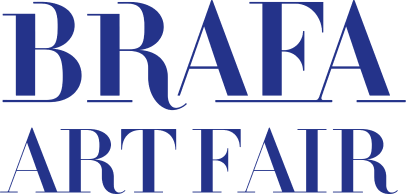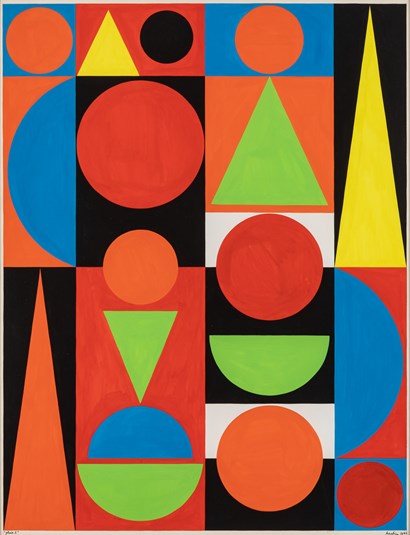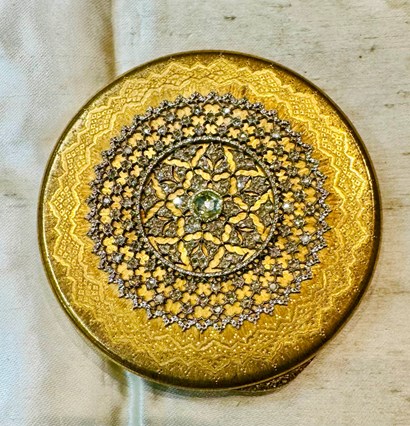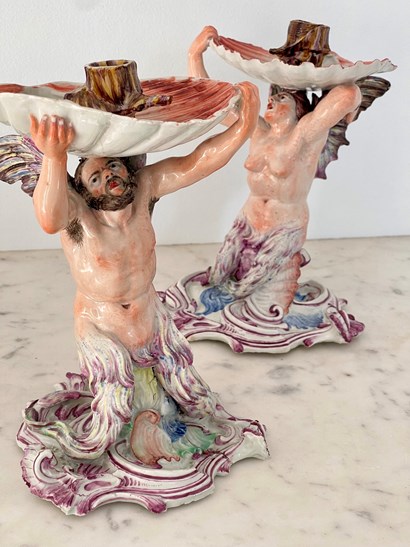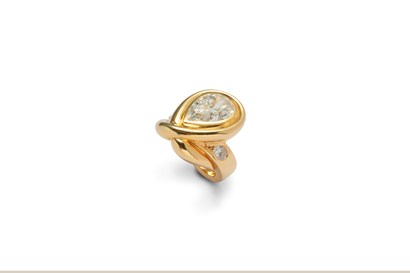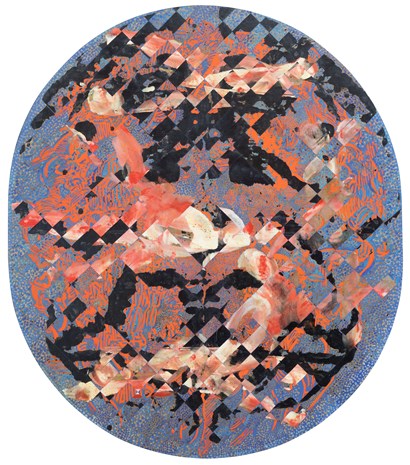This section will be available this Autumn.
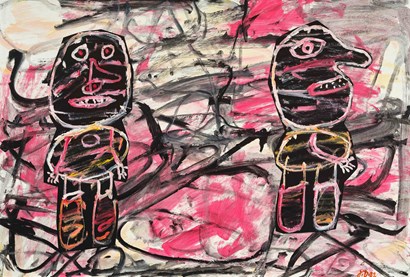
Galerie von Vertes
jean dubuffet
Jean Dubuffet (Le Havre 1901-1985 Paris) Site avec deux personnages, 10 September 1982 Acrylic and collage on paper, mounted on canvas 67 x 100 cm Monogrammed and dated lower right 'J.D. 82' Verso numbered on the stretcher 'F146' Provenance: Waddington Galleries, London (verso with label); James Corcoran Gallery, Santa Monica (verso with label); Karsten Greve Galerie, Cologne (verso with label); private collection, Switzerland (acquired from the above) Literature: Max Loreau, Catalogue des travaux de Jean Dubuffet, vol. XXXV: Sites aléatoires, Paris 1986, p. 73, n° 142 (ill.) Exhibition: London, Waddington Galleries, Jean Dubuffet. A retrospective, October 1983, n° 46 (ill.)
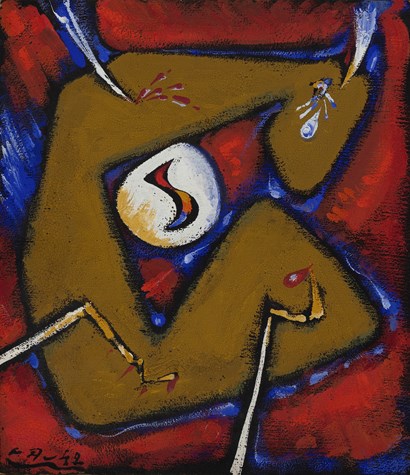
DIE GALERIE
andré masson
André Masson (Balagny-sur-Thérain 1896-1987 Paris) La victime, 1942 Gouache and sand on wood 37.8 x 32.8 cm Monogrammed and dated lower left Provenance: the artist’s studio; Galleria Studio Due Ci, Rome Literature: Masson: Massaker, Metamorphosen, Mythologien. exh. cat. Kunstmuseum Bern, Bern 1996, p. 39; André Masson. Un Combat, exh. cat. Musées de la Cour d'Or, Metz 1999, p. 39, 181; André Masson. La mémoire du monde, exh. cat. DIE GALERIE, Frankfurt am Main 2025, p. 43. Exhibitions: Masson: Massaker, Metamorphosen, Mythologien. Kunstmuseum Bern, 1996; André Masson. Un Combat, Musées de la Cour d'Or, Metz, 1999; André Masson. Zwischen Welten – Entremondes, Kunstsammlungen Chemnitz, Chemnitz, 2019-2020; André Masson. La mémoire du monde, DIE GALERIE, Frankfurt am Main, 2024-2025
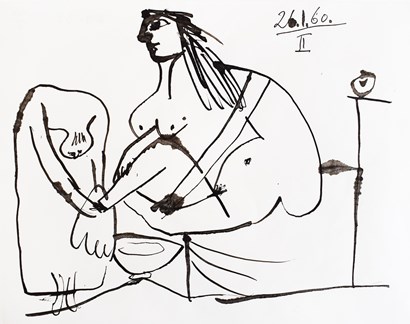
Gilden's Art Gallery
pablo picasso
Pablo Picasso (Malaga 1881-1973 Mougins) Le bain de pieds, 1960 Brush and India ink drawing on wove paper 20.9 x 26.9 cm This ink drawing is dated 26.1.60.II in ink in the upper image. Picasso created this work on Tuesday 26 January 1960 Provenance: Forum Fine Art, Zurich; private collection, Switzerland; Christie's, London, 10 February 2005, lot 685 Literature: C. Zervos (1968), Pablo Picasso - Œuvres de 1959 à 1961, Paris, vol. 19, reference n° 137 (ill., pl. 32)

Serge Schoffel - Art Premier
Sitting male figure Timoto-Cuica, 900-1300 AD Trujillo State, Venezuela Terracotta, pigments H 29 x W 23 x D 17.5 cm Datation: TL test n° 481z12 by the Research Laboratory for Archaeology, Oxford University, United Kingdom, on 7 May 1991 Provenance: Galerie Ferrero, Geneva, 1968; collection Barbier-Mueller, Geneva, Inv. n° 530-2; Sotheby's auction, Paris, collection Barbier-Mueller-Art Précolombien, on 22 and 23 March 2013, n° 265 Literature: Paz, Octavio, Butor, Michel, Barbier, Jean-Paul, Stierlin, Henri, Lavallée, Danièle, Conceição G., Corrêa, Barry, Iris, 1992, Art millénaire des Amériques : de la découverte à l'admiration, 1492-1992, Arthaud, fig. 130, p. 178 & 179; Conceição G., Corrêa, Barry, Iris, 2002, Amazonie précolombienne, Museo Barbier-Mueller de Arte Precolombino, Barcelona, 5 Continents, fig. 4, p. 17; Benson, Elizabeth P., 2003, Trésors de la céramique précolombienne du Museo Barbier-Mueller de Arte Precolombino de Barcelona, Musée Barbier-Mueller et Somogy éditions d’art, fig. 44, p. 52

Galerie Flak
Hemba ancestor figure Singiti (commemorative portrait of a chief) Democratic Republic of Congo-Upper Congo River 19th century or early 20th century Carved wood H 86.5 cm Provenance: Mia van Bussel collection, Amsterdam; Kevin Conru collection, Brussels; Adrian Schlag collection, Brussels; Guilhem Montagut collection, Barcelona Literature: Lexikon der Afrikanischen Kunst, Karl-Ferdinand Schaedler, Munich, 1994, p. 242
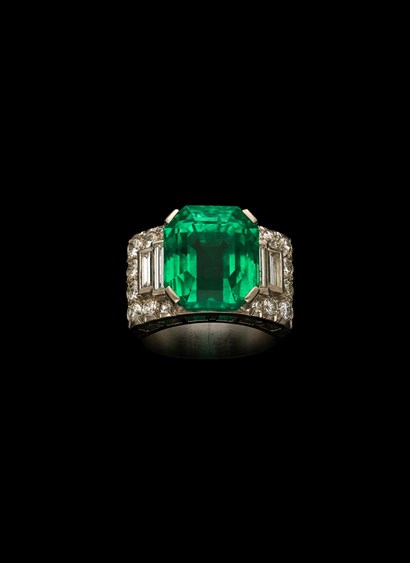
Pauline's Jewellery Box
Art Deco emerald & diamond ring, circa 1920-1930 Platinum, emerald and diamond Provenance: New York collection An Art Deco emerald & diamond ring, set with a step cut Colombian emerald weighing 10.87 carats flanked by baguette shaped & old mine cut diamonds. The emerald has a deep colour and is minor oil. Estimated total diamond weight is approximately 1.55 carats. Estimated colour E-G on average. Estimated clarity VVS-VS on average. The diamonds are bright & lively. Mounted in platinum. Accompanied by a SSEF certificate for the emerald.

Finch & Co
Ivory crucifix figure of Christ South Netherlandish, circa 1690-1700 Rosewood cross, carved ivory, silver halo, giltwood Small chips to fabric of hanging Perizonium, old smooth creamy patina H 109 x W 41.5 x D 22 cm (cross) H 40 x W 24 x D 6 cm (Christ) Belgium CITES: 2025/BE00989/CE Provenance: Finch and Co, circa 2005; English private collection; Irish collection Comparative reference: a similar example in the collections of the Victoria and Albert Museum inv. n° A.73-1920 A finely carved ivory figure of Christ mounted on a rosewood cross, adorned with a silver halo and a sacred motto. The cross is embellished with giltwood details and set on its original scallop-shaped rosewood base. At Christ’s feet rests an ivory skull and crossbones, symbolising Golgotha. His legs remain uncrossed, with hands and feet affixed by iron nails. In this image of the Passion, Christ is shown alive, his eyes open looking upwards to his right, his teeth visible with his mouth open in his call to God. Imagery based on the Passion of Christ became increasingly popular from the 13th century. The mix of emotions which well up in the devout upon looking at such a human image, a blend of guilt and gratitude, sorrow and sympathy, is a very powerful combination. The Carthusian monk, Ludolph of Saxony (died 1378) expressed this attraction, without seeking to explain it, in his ‘Life of Christ’: ‘I know not for sure…. how it is that you are sweeter in the heart of one who loves you in the form of flesh than as the word…. It is sweeter to view you as dying before the Jews on the tree, than as holding sway over the angels in Heaven, to see you as a man bearing every aspect of human nature to the end, than as God manifesting divine nature, to see you as the dying Redeemer than as the invisible Creator.’

Repetto Gallery
valerio adami
Valerio Adami (Bologna, 1935) La firma del muro antico, Odisseo (per E. Pound), 1977 Acrylic on canvas 204 x 152 cm Signed, dated and titled on the reverse: Adami 8.8.77 17.11.77 La firma del muro antico. Odisseo (per E. Pound) Label on the reverse by Galerie Rive Gauche Marcel Strouk, Paris Certificate of authenticity by Archivio Valerio Adami n° 878 Provenance: Galerie Maeght, Paris; private collection, France (acquired from the above) Exhibition: Valerio Adami, 7 October-12 November 1978, Palais des Beaux-Arts, Charleroi; Valerio Adami. Ripensando la realtà, Dep Art Gallery, Milan, 6 March-17 May 2025
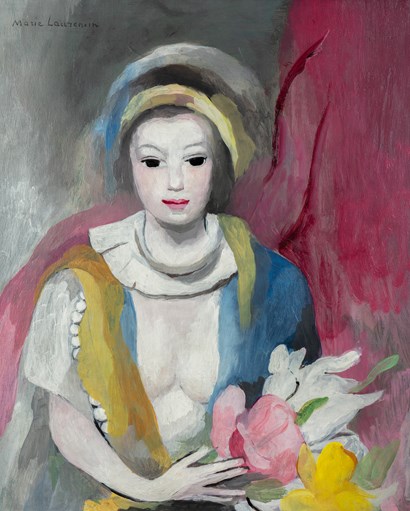
Brame & Lorenceau
marie laurencin
Marie Laurencin (Paris, 1883-1956) Jeune fille au bouquet de fleurs, circa 1935-1940 Oil on canvas 61 x 50 cm Signed upper left Provenance: private collection Literature: Daniel Marchesseau, 'Marie Laurencin, Catalogue raisonné de l’Œuvre Peint', 1986, Éditions du Musée Marie Laurencin, Japan, 1986, n° 1150, repr. B&W

Galerie Oscar De Vos
frits van den berghe
Frits Van den Berghe (Ghent, 1883-1939) Ooidonk alley, 1923 Oil on canvas 48.5 x 55 cm Signed lower right: FVBerghe Provenance: Galerie Campo, Antwerp Literature: Boyens, P., Frits Van den Berghe 1883-1939 (1999), 396, n° 309 (ill.); Servaes, W., V. Van Doorne & R. Van Lerberghe, 1924 Honderd jaar later, exh. cat. (2024), 56-57 (ill. & cover) Exhibition: 2024, Sint-Martens-Latem, Latemse Kunstkring/ Gemeentehuis, 1924 Honderd jaar later, s.n. Ooidonk Alley belongs to the key works of Van den Berghe’s short but decisive stay in Bachte-Maria-Leerne (1922–1923). He lived there at the entrance of the quadruple beech-lined avenue leading directly to Ooidonk Castle. That place was an actual re-grounding – a breakthrough towards a new way of painting that no longer records, but constructs. Here, the Lys landscape is no longer seen ‘from the outside’, but becomes an inner building site. The trunks become cylindrical volumes, the soft bend of the road becomes a carrier of rhythm. The colour language definitively abandons the sombre earth tones of his Ostend years: a new clarity emerges, a ‘new spring’, in which light assumes a plastic role. Ooidonk Alley is thus a document of the moment in which Van den Berghe finds his modernity: pure form, condensed space, a landscape as architecture. This work shows how, at the end of 1922–1923, Van den Berghe redefined the Lys region: as an ordered space of line, colour and spirit – rather than a piece of nature.
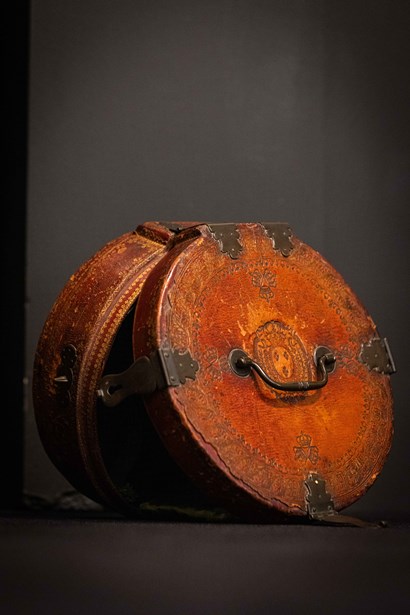
Art et Patrimoine - Laurence Lenne
Transport case, for Louis XV at the Château de Versailles France, made between 1745-1749 Gilt-tooled leather, copper hinges H 11 cm - Ø 26.5 cm Provenance: Louis XV in Versailles Carrying and protective case for a silver porringer. The lid of the case is decorated with the coat of arms of Louis XV and the three facing crowns of the Château de Versailles, both gilt-tooled. All copper hinges are stamped with the crowned 'C' mark. The case was made between March 5th, 1745 and February 4th, 1749.
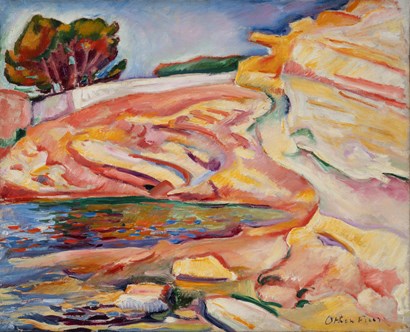
HELENE BAILLY MARCILHAC
Emile Othon Friesz (Le Havre 1879-1949 Paris) Bord de Mer, circa 1907 Oil on canvas 54 x 65 cm Signed lower right: Othon Friesz This work will be included in the forthcoming catalogue raisonné of the painted work of Emile Othon Friesz which is currently being prepared by the Galerie Aittouarès. Notice of inclusion n° 25361, delivered by Mrs. Odile Aittouarès on 3 January 2025
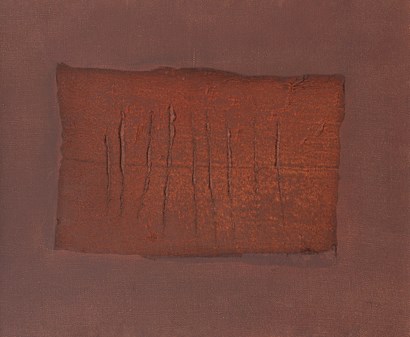
Maurice Verbaet Gallery
Jef Verheyen (Belgium, Itegem 1932-1984 Apt, France) Hommage à Fontana, 1959 Oil, collage on canvas 50 x 60.5 cm Provenance: Hans Liechti, Grenchen; private collection, Switzerland Literature: Willy Van den Bussche and Léonore Verheyen, Retrospective Jef Verheyen 1932–1984 (Ostend/Bruges: PMMK – Provincial Museum of Modern Art / Stichting Kunstboek, 1994), p. 76 Exhibitions: Retrospektive Jef Verheyen 1932-1984, Josef Albers Museum Quadrat, Bottrop, 10 July-4 September 1994; Retrospectieve Jef Verheyen 1932-1984, PMMK Museum voor Moderne Kunst Ostende, 26 March-13 June 1994

Herwig Simons Fine Arts
Wooden chef-d'oeuvre of the Compagnonnage France, 19th century Walnut, maple and mohogany wood H 185 cm Provenance: former private collection, France A fine, rare and large nineteenth-century wooden exhibition model, the chef-d'oeuvre of a master carpenter of the Compagnonnage. These models were made to show the technical expertise and skill of the master carpenter. The Compagnonnage is an old French guild with roots in the 12th century. In the eighteenth century, they incorporated symbols and rituals, many of which were borrowed from Freemasonry to create an initiatory progression for its members.
_GeorgesJEANCLOS_T638915587955330883.tif?width=410&height=2000&qlt=90&scale=both&mode=max&format=jpeg)
Galerie Capazza
georges jeanclos
Georges Jeanclos (Paris, 1933-1997) Kamakura, 1991 Terracotta H 30 x W 45 x D 40 cm Provenance: the artist's studio Exhibition: Georges Jeanclos, Élévation, Abbaye Royale de Fontevraud, 25 November 2023-4 March 2024 The Kamakura series was inspired by Georges Jeanclos' trip to Japan, which took him to the country's ancient medieval capital, home to the oldest Japanese Zen gardens. Jeanclos was deeply moved by the beauty and serenity that emanated from these meditative and contemplative landscapes. Upon his return to Paris, these characters were born, sculptures of resilience, ‘monks in meditation, spectators of their inner gardens’ (Tzvetan Todorov). Georges Jeanclos (1933–1997) was one of the great French sculptors of the 20th century. His work was inspired by the traumatic events of the Second World War. To escape the roundups threatening Jews in France, his family had to hide in the woods; he himself, aged around ten, learned to live with the danger of death. In the aftermath of the Liberation, he saw the bodies of former collaborators hanging from lampposts; shortly afterwards, he discovered the skeletal beings who had survived the camps. Decades later, Jeanclos would respond to this formative experience: not by withdrawing into his own experiences, but by opening himself up to the universal, listening to all suffering, past and present; not by depicting horror, but by finding within himself the strength to create beauty. Jeanclos transforms the earth he works with into thin sheets, which he uses to form figures with similar faces, both children and adults, men and women. They are sleepers lying under a sheet of earth; beings enclosed in urns stamped with Hebrew letters taken from prayers for the dead; figures loaded onto boats bound for the other world; kamakuras, meditating monks. Later, he would add Pietàs, Adam and Eve in love, couples brushing against or embracing each other. Jeanclos' images reveal both the insignificance of our person and the indomitable strength of our love; by their mere existence, they help us to live. Tzvetan Todorov

